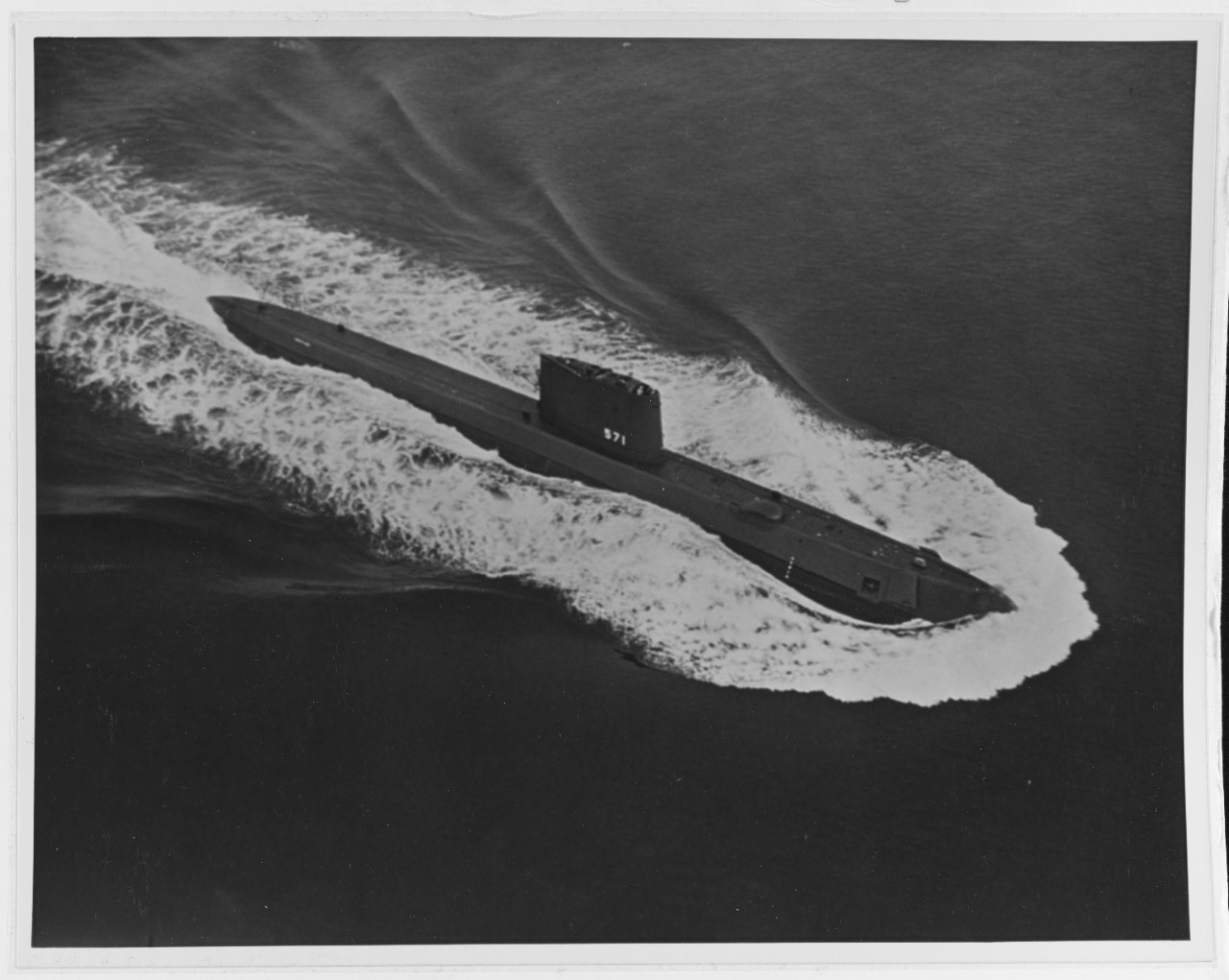History of USS NAUTILUS (SSN 571)

Construction of NAUTILUS was made possible by the successful development of a nuclear propulsion plant by a group of scientists and engineers at the Naval Reactors Branch of the Atomic Energy Commission, under the leadership of Captain Hyman G. Rickover, USN.
In July of 1951, Congress authorized construction of the world's first nuclear powered submarine. On December 12th of that year, the Navy Department announced that she would be the sixth ship of the fleet to bear the name NAUTILUS. Her keel was laid by President Harry S. Truman at the Electric Boat Shipyard in Groton, Connecticut on June 14, 1952.
After nearly 18 months of construction, NAUTILUS was launched on January 21, 1954 with First Lady Mamie Eisenhower breaking the traditional bottle of champagne across NAUTILUS' bow as she slid down the ways into the Thames River. Eight months later, on September 30, 1954, NAUTILUS became the first commissioned nuclear powered ship in the United States Navy.

On July 23, 1958, NAUTILUS departed Pearl Harbor, Hawaii under top secret orders to conduct "Operation Sunshine", the first crossing of the North Pole by a ship. At 11:15 pm on August 3, 1958, NAUTILUS' second Commanding Officer, Commander William R. Anderson, announced to his crew, "For the world, our country, and the Navy - the North Pole." With 116 men aboard, NAUTILUS had accomplished the "impossible", reaching the geographic North Pole - 90 degrees North.
In May 1959, NAUTILUS entered Portsmouth Naval Shipyard, Kittery, Maine for her first complete overhaul - the first of any nuclear powered ship - and the replacement of her second fuel core. Upon completion of her overhaul in August 1960, NAUTILUS departed for a period of refresher training, then deployed to the Mediterranean Sea to become the first nuclear powered submarine assigned to the U.S. Sixth Fleet.
Over the next six years, NAUTILUS participated in several fleet exercises while steaming over 200,000 miles. In the spring of 1966, she again entered the record books when she logged her 300,000th mile underway. During the following 12 years, NAUTILUS was involved in a variety of developmental testing programs while continuing to serve alongside many of the more modern nuclear powered submarines she had preceded.
In the spring of 1979, NAUTILUS set out from Groton, Connecticut on her final voyage. She reached Mare Island Naval Shipyard, Vallejo, California on May 26, 1979 - her last day underway. She was decommissioned on March 3, 1980 after a career spanning 25 years and over half a million miles steamed.
In recognition of her pioneering role in the practical use of nuclear power, NAUTILUS was designated a National Historic Landmark by the Secretary of the Interior on May 20, 1982. Following an extensive historic ship conversion at Mare Island Naval Shipyard, NAUTILUS was towed to Groton, Connecticut arriving on July 6, 1985.
On April 11, 1986, eighty-six years to the day after the birth of the Submarine Force, Historic Ship NAUTILUS, joined by the Submarine Force Museum, opened to the public as the first and finest exhibit of its kind in the world, providing an exciting, visible link between yesterday's Submarine Force and the Submarine Force of tomorrow.


